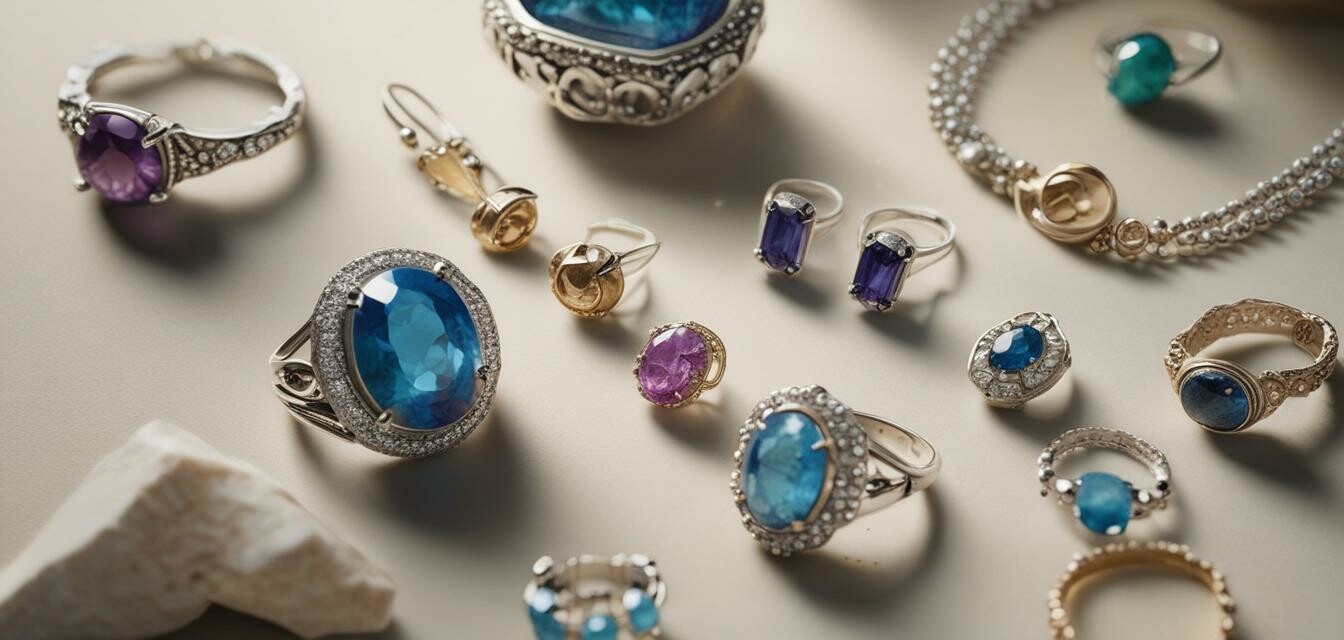
Sustainability Goals in the Jewelry Sector for 2025
Key Takeaways
- Businesses in the jewelry sector aim to use 100% responsibly sourced materials by 2025.
- Focus on reducing carbon footprints and enhancing transparency in sourcing.
- Collaborations between brands and artisans promote ethical practices.
- Increasing consumer demand for sustainable products drives change.
- Innovative technologies are being adopted for sustainable and efficient practices.
The jewelry industry is in the midst of a significant transformation as it strives towards sustainability goals for 2025. With growing consumer awareness and demand for ethical sourcing, brands are re-evaluating their operations to make more sustainable choices. In this article, we will investigate the specific sustainability goals set by the jewelry sector and how the industry aims to achieve these ambitious targets.
Understanding the 2025 Sustainability Goals
The jewelry sector is focusing on several key objectives that align with global sustainability efforts. Let's explore what these goals entail:
| Goal | Description |
|---|---|
| 100% Ethical Sourcing | Ensure that all materials used in jewelry are sourced from ethical and environmentally responsible suppliers. |
| Carbon Neutral Operations | Strive for carbon neutrality across all business operations by minimizing emissions and offsetting any unavoidable footprints. |
| Increased Transparency | Enhance the traceability of gemstones and metals, allowing consumers to understand the sourcing and production processes. |
| Community Engagement | Invest in the communities from which their materials are obtained, supporting local artisans and fostering equitable trade practices. |
| Waste Reduction | Implement strategies to reduce waste in manufacturing processes, promoting recycling and upcycling initiatives. |
The Role of Artisans and Local Communities
A significant aspect of achieving these sustainability goals is fostering relationships with local artisans. These skilled individuals not only create beautiful pieces but also ensure the use of sustainable practices in sourcing materials. Collaborative practices promote both ethical standards and economic stability in local communities.
Benefits of Collaborating with Artisans
- Creation of unique and culturally rich products
- Empowerment of local economies through fair trade
- Promotion of traditional craftsmanship
- Reduction in transportation emissions by sourcing materials locally
Consumer Demand Drives Change
Today's consumers are increasingly inclined to support brands that prioritize sustainability. This shift in purchasing behavior is prompting jewelry brands to rethink their strategies and adopt more eco-friendly practices. The following points illustrate this trend:
- Growing awareness of environmental issues among buyers.
- Desire for transparency regarding product origins.
- Interest in unique, artisanal, and ethically-produced products.
- Willingness to pay a premium for sustainable goods.
Innovative Technologies in Sustainable Jewelry
Many brands are leveraging new technologies to enhance their sustainability efforts. Techniques such as 3D printing facilitate the creation of intricate designs while minimizing waste. Moreover, blockchain technology can be employed to provide transparent tracking of gemstone origins, contributing to the overall credibility of products.
Examples of Innovative Technologies
| Technology | Benefits |
|---|---|
| 3D Printing | Minimizes material waste, allows for rapid prototyping, and reduces energy consumption. |
| Blockchain | Ensures transparency in sourcing, tracks the history of materials, and prevents unethical practices. |
| Recycled Materials | Conserves natural resources, reduces environmental impact, and supports circular economy principles. |
Final Thoughts on Sustainability Goals
The journey toward sustainability in the jewelry sector is multifaceted, involving collaborations, innovative technology, and a shift in consumer behavior. By working towards these clear goals, the industry can not only enhance its practices but also ensure a positive impact on the planet and its people.
Tips for Supporting Sustainable Jewelry
- Research brands before purchasing to ensure they align with your values.
- Opt for jewelry made from recycled or upcycled materials.
- Support artisans and brands that promote ethical practices.
- Consider vintage or second-hand jewelry to reduce demand for new materials.
- Spread awareness about the importance of sustainable practices in the jewelry industry.
Pros
- Promotes ethical practices in sourcing and production.
- Supports local artisans and economies.
- Encourages innovation in sustainable technologies.
- Aligns jewelry practices with consumer values.
Cons
- Transitioning to sustainable materials may increase costs.
- Lack of awareness among some consumers about sustainable practices.
- Challenges in verifying ethical sourcing during production.
To stay updated with more articles on sustainability practices in the jewelry sector, visit our Sustainability Practices page. You can also explore our News and Trends section for the latest updates.